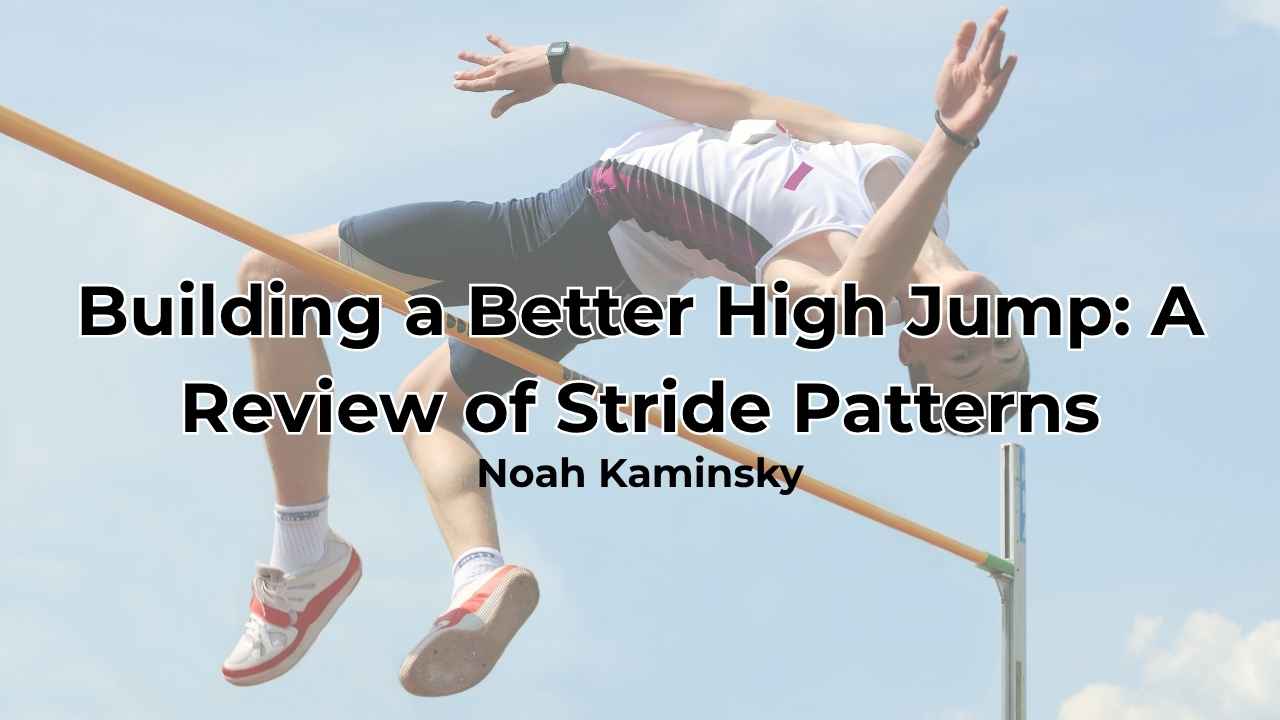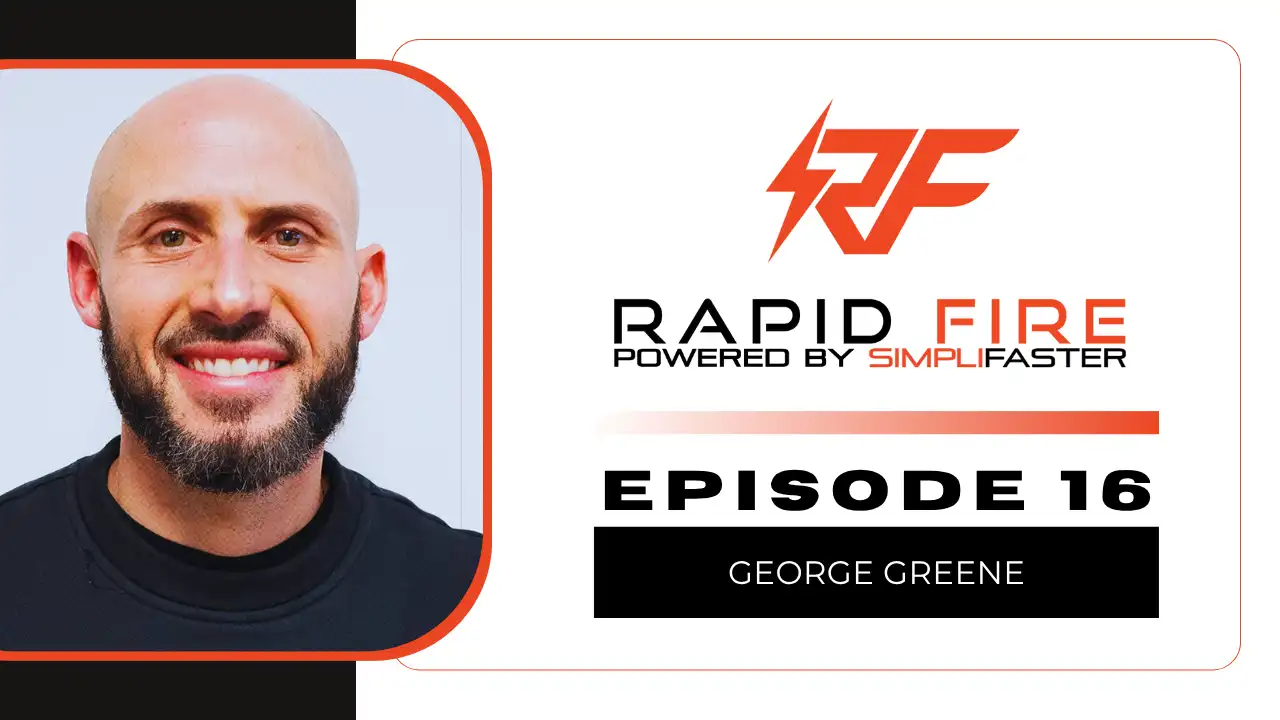[mashshare]
If you read my articles, it’s no secret that I’m a huge Formula 1 fan and I try to take modeling for performance and apply it to team sports. This article is special, as it connects great sport science, math that we can use, and the right technology, and brings them all to the next level. Most coaches are now a little hungover from all the data and sport science hype of the last few years, but I know this outline will reignite their passion by injecting the thrill of racing into training.
This article will reignite your passion by injecting the thrill of racing into training, says @spikesonly. Share on XSpeed is the ultimate variable in sport, as nearly everything is connected to how fast an athlete can perform physically and mentally. Sport science and sports technology aren’t going anywhere, and this guide is not just about numbers and equipment—it’s about real advantages that make a difference. If you are serious about winning, this article is for you.
Modeling Is Simply About Finding a Winning Formula
Most of the coaches I know have a little bit of fatigue from all of the sports data and analytics presentations over the past few years. The hype, the big budgets, and even the job security seem to hang on elements that most coaches don’t really want to be doing. Most coaches enjoy working with people, not crushing spreadsheets or doing other work that isn’t in the instructional arena. I learned over the last few seasons that having an athlete management system stabilizes day-to-day operations and frees up coaches to pursue true advantages like modeling performance or parts of performance.
The following article is a list of metrics with science that stem from Formula 1 and are directly connected to sports without being too cute. Analogies are great to use, but if metrics don’t show up in actual training or competitive results, it’s just fantasy coaching. All of the lessons here are ready to use, meaning you can literally get started optimizing and maximizing training on Monday. Some of the principles are developed from the presentation I did for the NHL Coaches seminar, and bright professionals like Eric Renaghan took some of the concepts available in sports science and refined them even more.
The key takeaway is that applied science is knowing the value of the right science, and knowing what to do so it actually shows up in games, not just research studies. Countless coaches can share their painful experience of seeing something promising in the journals, only to have real-world confounding variables wash away the potential of the concept or ideas.
Applied science is knowing what to do so the data shows up in games, not just research studies, says @spikesonly. Share on XMy last suggestion before you dig into the key metrics and other performance indicators for sports is to have fun with racing and watch a Formula 1 race live or on TV. The races are great for U.S. readers, as most of the events are televised on Sunday mornings and make a perfect brunch spectacle. It doesn’t take long to understand how difficult the sport is to win, as the margin for error is ridiculously small and the vast number of variables involved with winning are enormous.

Build Your Eccentric Reserve
The early frames of Formula 1 race cars were aluminum-based alloys, but now carbon fiber rules. Not only is it light, it’s also stronger than earlier options. When building athletes, think about more than how many pounds of muscle you are adding or just getting them to lift—think about the remodeling of their connective tissue. Most of the problems we see with aging athletes are not really about recovery of muscles but the regeneration rates of tendons and ligaments.
In the interview with Martino Franchi, the role of eccentric training was brought up in detail. If we were to do the interview again, I would ask more about the extracellular matrix and longitudinal adaptations, not just what happens with a few sessions. Building an eccentric reserve is similar to building a maximal strength ratio compared to body weight—it requires dedication over the long run.
The article on the Raptor Test brought up the use of the eccentric utilization ratio, a crude but nimble way to see the relationship between squat jumps and countermovement jumps. If the ratio difference is not large enough, injuries are likely to occur with those that simply ignore this gross metric. More precise measures like peak eccentric force and the reactive strength index are great for flywheel training and specific stiffness, but eccentric rate of force development likely reigns supreme if you want to really know how athletes are trending.
When it comes to #durability, the most important metric is eccentric reserve, says @spikesonly. Share on XWhen it comes down to durability, the most important metric is eccentric reserve. Sport mechanics matter, but not having a reserve is too risky to let slide. Longevity in sport is a priority, and in order to have an extended career, what connects the body together needs to be resilient.

Limiting Factors and Energy Systems
One of the most frustrating discussion points is the role of the brain with fatigue, mainly because much of the research isn’t making a difference with workouts or strategies in racing or pacing. A useful approach to energy system development is not going down rabbit holes that lead to “knowledge nowheres.” Many coaches want to get deep into physical and that is necessary, but what makes a great physical model for performance is knowing how much is enough to create a solid plan. You don’t need space-age quantum mechanics to build a bridge, you just need good physics and engineering.
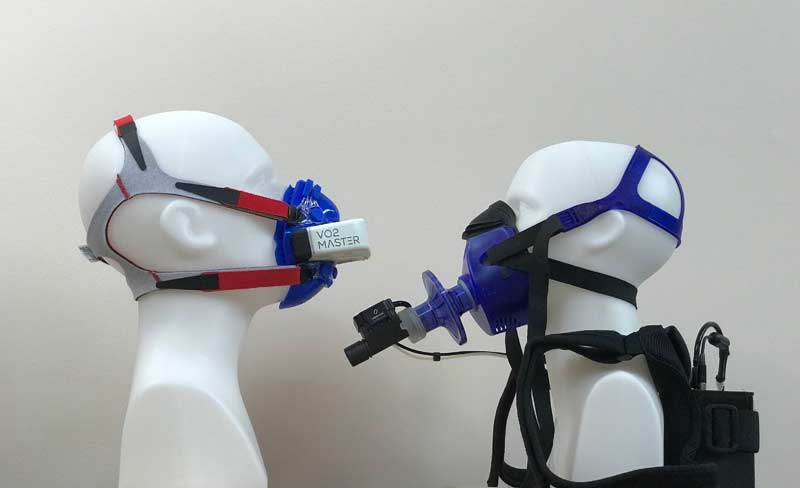
When designing ways to improve performance, first determine how fit and how fast an athlete is, and then add the variables to maximize their athletic abilities. I have seen plenty of athletes who dominated fitness tests, but their willpower at the end of games was not even close to their aerobic talents. Think about how fast Formula 1 cars travel: Sometimes they reach over 350 kilometers per hour, and do so for up to 90 minutes. The modern soccer game is very similar: Athletes go fast and far, for a long period of time.
Determine how fit & fast an athlete is, then add the variables to maximize their athletic abilities, says @spikesonly. Share on XSimpliFaster waited patiently to provide the Moxy Monitor, a system I alluded to earlier. When designing conditioning programs, the limiting factors are primarily connected to the heart and lungs, and the mitochondria. While I do believe heart wall architecture, hemoglobin mass, and even capillary density are all part of successful endurance modeling, using tissue oxygenation is an easier start. There is plenty of great research, and I personally scan the scientific studies to see how valid and reliable the equipment is before recommending it. Muscle oxygenation assessment is improving, and it’s at the point of being a viable solution for team sport, not just for examining extreme performance such as stage cycling or triathlon.

Refine the Foot-to-Ground Interaction
As a fan of Formula 1, I find each team’s tire strategy fascinating. When and what—meaning when in the race a team makes a pit stop and what tire they use—is more art than science. Much of the tire selection is based on obvious factors like race conditions (rain, for example) and race track formation. Still, it’s the driver’s style and strategy that determine the final choices. Recently, there’s been a lot of investigation into pitch conditions and cleat design by the host of the World Cup in 2022. The challenge is balancing the need to produce force with the need to reduce injuries, so compromises exist with footwear and training.
Footwear and training need to balance the need to produce #force with the need to reduce injuries, says @spikesonly. Share on XThe winning strategy with sports podiatry is clear, but access to the right expertise is not available to everyone due to the small number of qualified podiatrists. Every athlete needs to have their foot and lower extremities evaluated clinically first. Gait and movement evaluation should be objective using pressure mapping, and their sports performance in their footwear should be connected with follow-up testing.
How the ground, foot, athletic footwear, and training program interact is a major undertaking that gets either ignored or botched. Teams may have laser scanning and 3D-printed orthotics, but most of the internal research outcomes have failed to show up with injury rates. I believe the studies’ limitations are due to the complexity of the foot and the difficulty of seeing intervention-based research succeed, not the clinician.

My recommendation is to combine contact grid assessment with pressure mapping to see how foot function interacts with the ground surface at high speeds. Walking and running can be done on a treadmill, but acceleration work can be done on a 30-meter track or synthetic turf. Generally, athletes who lack elasticity have issues below the ankle, not with the knee and hip joint.
Without any training at all, the right footwear can improve an athlete’s speed just enough to be worth the effort. Comfort, not just function, is important, as athletes who blister or have irritation will not be compliant with any appliance or shoe no matter how great it’s supposed to work for performance. Investing in sports podiatry is the equivalent to investing in a tire engineer in Formula 1.

Managing Power and Force with Strength Programs
The analogy of building a bigger engine is overplayed in strength and conditioning, but still valid in team sport and Olympic sport. What has changed are the force-velocity models for resisted sprinting, jumping analysis, and even upper body assessments. The question most high performance coaches and strength professionals have is how do we do more than calculate optimal loads? Without oversimplifying, coaches must find a way to put more power into smaller time frames, and maximal abilities must be in harmony with rates of speed expression.
One of the most controversial ways to evaluate research is to compare it to the team results or group outcomes of internal data. Then, if you know what is possible with many variables, you can appraise what is probable with single interventions. Here are a few reasons that many straightforward linear models fail as sport science models.
-
- They compare controls of nothing to interventions of something, and reach the conclusion that the intervention has high value.
-
- They don’t re-engineer success by replicating the systems of effective coaching programs. Instead, they tend to replicate workouts that make coaches cringe.
-
- They use subjects with limited training backgrounds, thus making interventions look better than they really are.
- They look at short periods of training, and don’t follow up with chronic tracking or methodologies. To me, this is the biggest drawback in research today.
As you can see, modeling performance with strength and conditioning methods is tough, because most programs juggle a lot of variables that may interact poorly or possibly work in synergy if designed right.

Electronic Timing and Laser Assessment
When watching a race on TV or with the F1 iPad app, I wonder why teams don’t follow suit with their dashboards and testing. Just to ensure everyone reading this is on the same page, Formula 1 is a weekend event, with practice and qualifying days preceding the actual race. This process of exposure, refinement, and then competition is rarely seen in team sport. For some strange reason, teams love combines when drafting, but nobody follows up each season with the same tests to ensure qualities are preserved or even improved. Some teams do a great job of evaluating players from year to year, but they are in the minority.
The core need to know if athletes can produce the same speed is important for two distinct reasons. Athletes are successful due to the composition of qualities they have, and losing these qualities may jeopardize their ability to perform. Second, athletes can hide injuries and manage playing short, but absolute testing exposes dysfunction.
#Lasers are now the gold standard because they pinpoint athletic milestones, says @spikesonly. Share on XWe are currently at the transition point from electronic split timing to instantaneous laser assessment. The difference is quite simple: splits are total time scores from point A to point B, and lasers sample so fast that every millisecond is measured continuously. Splits are not obsolete, but lasers are now the gold standard because they pinpoint athlete milestones, not summarize speed in segments of distance. Coaches must be fluent in speed assessment to know time or distance to peak velocity, as well as what is a good 20m time. Otherwise, we can’t make progress in understanding more complicated sporting actions, such as change of direction or decay rates in repeated sprint testing.

Deceleration Has Finally Evolved
By now, coaches should be aware of the differences between agility and change of direction. I personally believe too much emphasis on replicating practice is resulting in the same problems as before, meaning failure to improve performance and failure to reduce injury. Strength and conditioning coaches sometimes extend their role too much, and overlapping the skill development of sport coaches creates unnecessary redundancy. The main difference between redundancy and reinforcement is that the former dilutes and the later enhances. It’s important that athletes actually practice, but it’s better to train in rich environments versus doing watered-down practices with a strength coach.
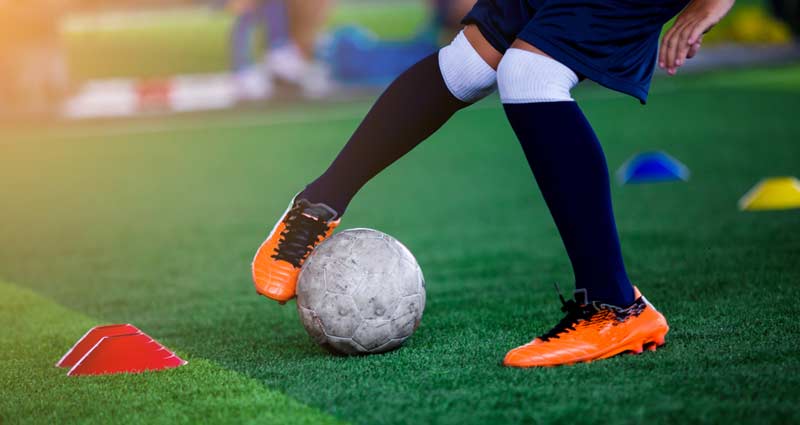
From a distribution standpoint, it is my conviction that training should include transitional skills that simulate many of the demands of a game situation, and capacity to perform those skills should be a priority. Strength and conditioning coaches need to note these two important advancements:
-
- The use of the change of direction deficit is a simple and effective way to guide training protocols. While it’s not new, it’s gaining traction now because enough coaches are catching on after a few years of seeing the metric work in training.
- Appreciation of the penultimate step with change of direction is trending for good reason. Coaches seem to connect to deceleration strength, but how steps ricochet forces is less obvious. With kinetic data being available, coaching cues can now have more meaning as they are based on real physics versus observational guesswork.
The best way to track the deceleration and physical components of agility is to work with team coaches to see if they are able to detect anything on film, including improvements or stagnation in the transfer of gross physical ability. Video tracking and IMU sensor tracking are at the point where coaches can see centimeters of motion, but we are still years away from decoding how the brain responds and creates space in games. In the meantime, collect gross capacity measures to ensure that strength and conditioning isn’t letting athletes down, as all of the burdens of agility can’t be laid on one profession.

Body Composition – Go Beyond Lean Mass
One of the best ways to get an athlete better is to literally shape them into whatever gives them the best chance to win. In the past, an athlete’s leanness was all that was needed. Now the game is more demanding, with the interaction of speed and power testing, along with DEXA scans for cross-sectional thickness and even bone density. I think we take body composition for granted and because it’s highly connected to lifestyle choices and nutrition, it is often ignored. We already reviewed the value of carbon fiber frames for Formula 1 cars, but the difference is not just strength or resilience, it’s making the car as light as possible for many sports that require long continuous play. Basketball, rugby, and soccer all are dual position sports that have high work rates and work volumes, so being an optimal weight is just as important as being aerobically fit.
The biggest mistake modern training programs make is giving up on #nutrition and body composition, says @spikesonly. Share on XGiving up on nutrition and body composition is the biggest mistake I see with modern programs, because it demonstrates the weakness of the organization and reinforces that being overfat is acceptable. Healthy athletes are lean, but we see far too many crash diets now with combat sports and those who need to hit contract weights. The solution? Focus on athletes treating their bodies like temples not just art exhibits. While, as a society, we praise the form of the human body, we sometimes overlook the internal state of it. Athletes and coaching staff will sometimes ignore the cost of being lean in order to hit a metric. Endurance sports see this all the time, and it needs to change. Blood analysis with biometric data is a perfect complement.
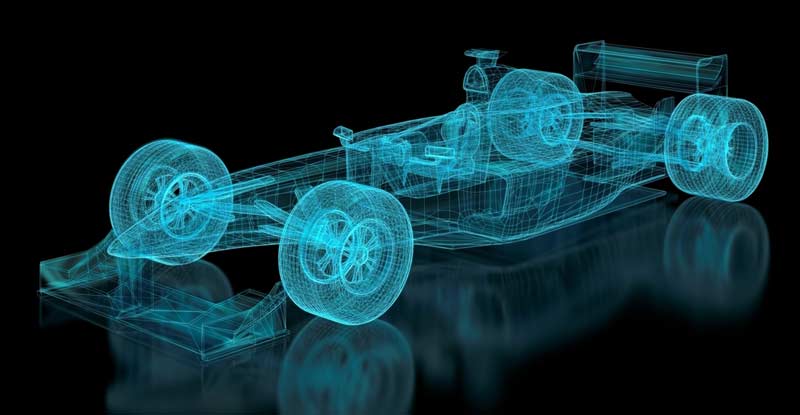
A sound metric is to not just look at reducing body fat, but look at where muscle is carried on a body. Many athletes have issues with being too large, even when they are not lifting upper body. This is harder than managing volume in the weight room—it makes nutrition and conditioning more of a dark art than science. For athletes losing mass without losing speed and without hampering the endocrine system, coaches must be patient and not rush the process.
Start Your Engines with Modeling
The most ironic aspect of modeling performance is getting out of inertia and having a simple plan to win at winning. You don’t need to overhaul everything, you just want to find an advantage that lasts. I have found that it’s better to nail something down really well then “move the needle” and dilute the time you invest in too many areas.
Modeling is about personalizing the science to your own environment and resources—have fun with it, says @spikesonly. Share on XThe list above is only seven variables that are involved with improving performance, and countless others exist that may be just as effective. Feel free to expand, hack, or skip over anything that doesn’t seem to resonate with you. Modeling is about personalizing the science to your own environment and resources. Have fun with this, as coaching is supposed to be a job that provides joy, and winning is not a bad feeling at all.
Since you’re here…
…we have a small favor to ask. More people are reading SimpliFaster than ever, and each week we bring you compelling content from coaches, sport scientists, and physiotherapists who are devoted to building better athletes. Please take a moment to share the articles on social media, engage the authors with questions and comments below, and link to articles when appropriate if you have a blog or participate on forums of related topics. — SF
[mashshare]

